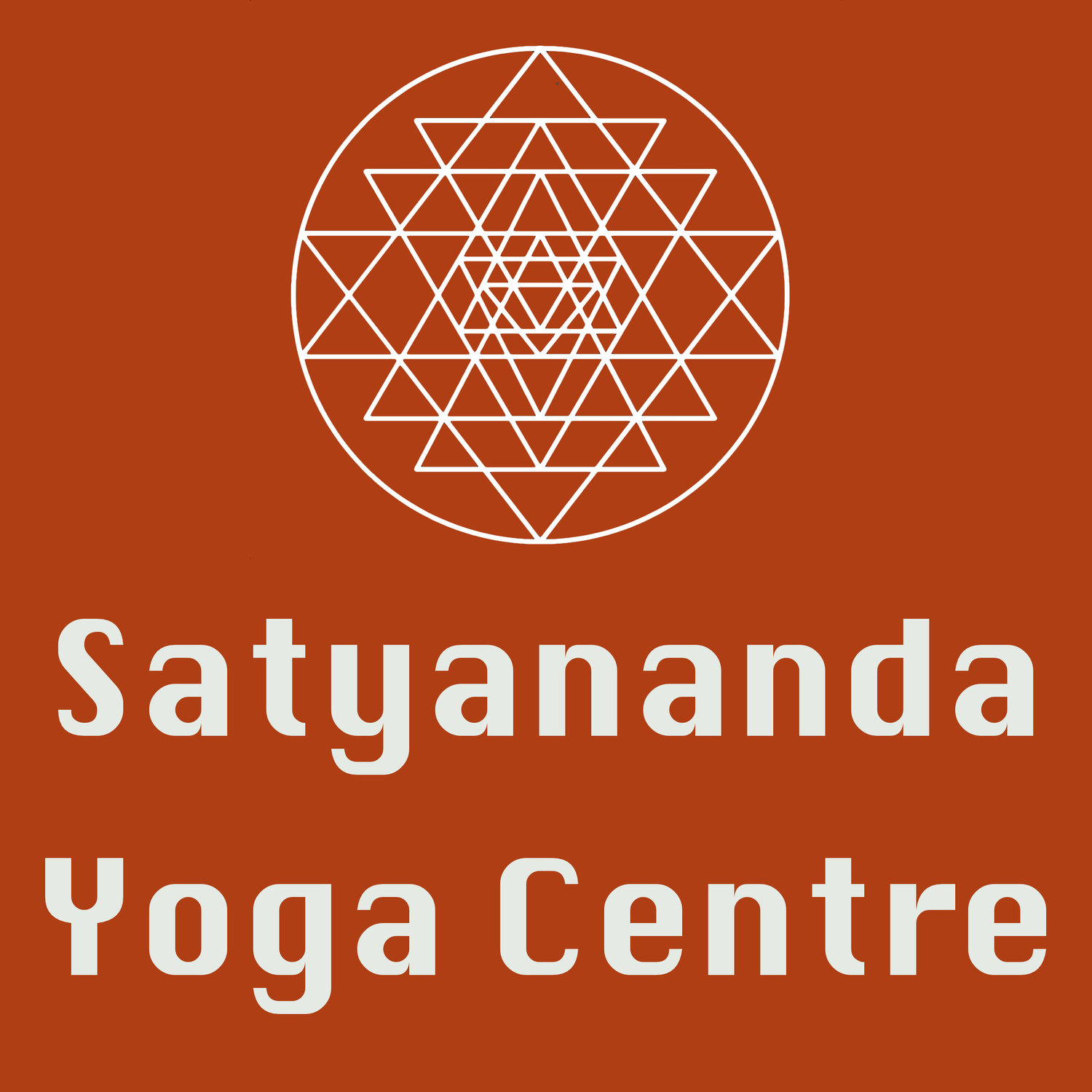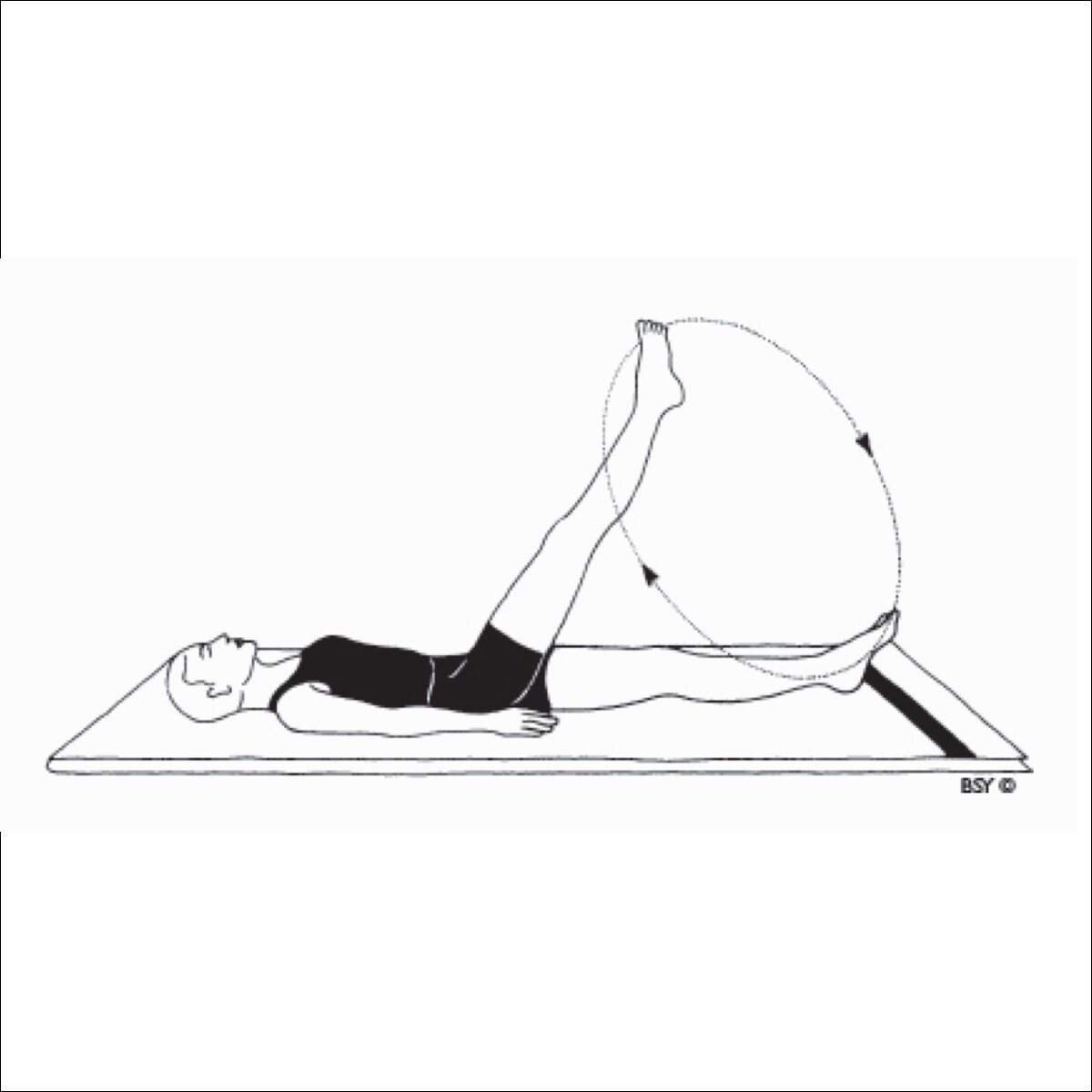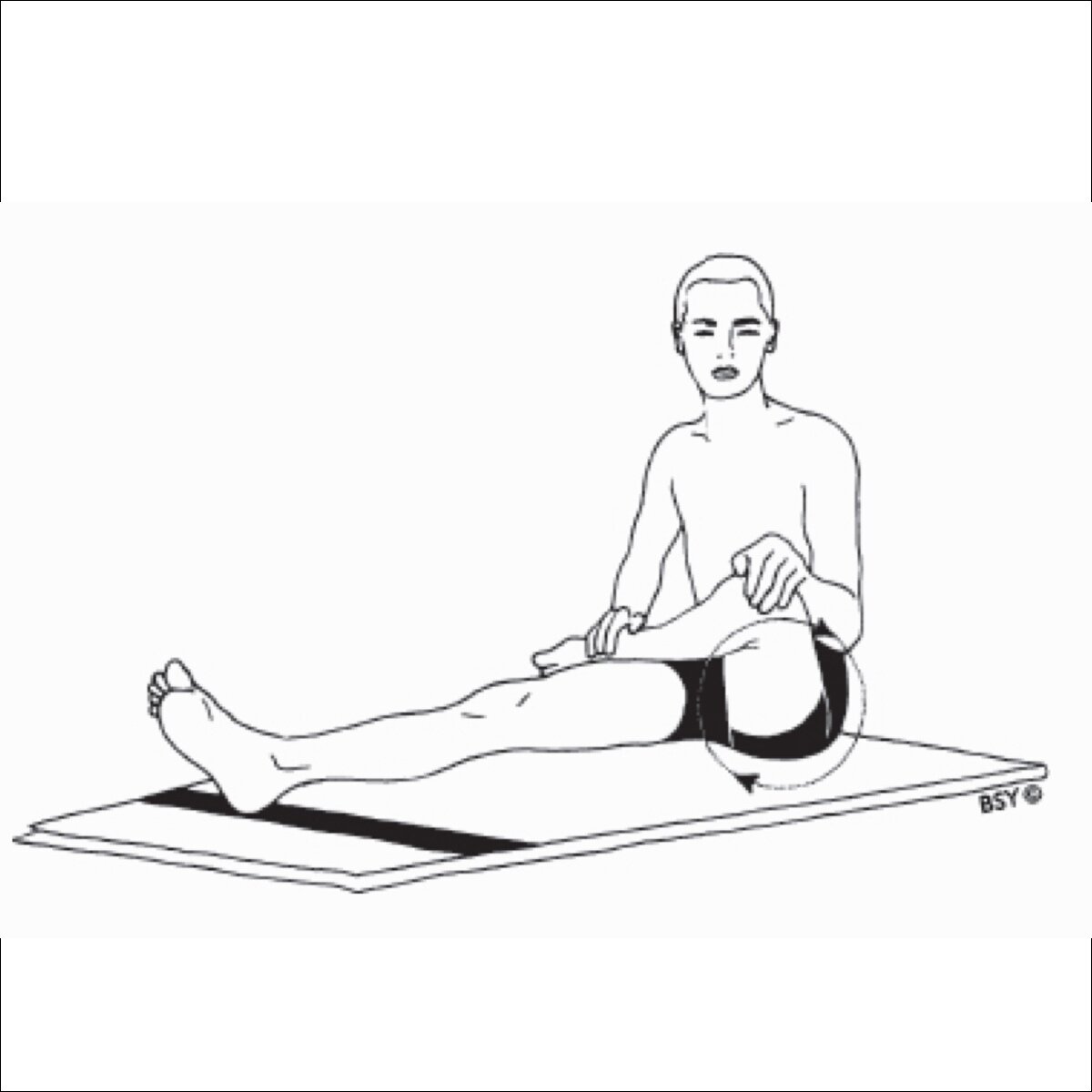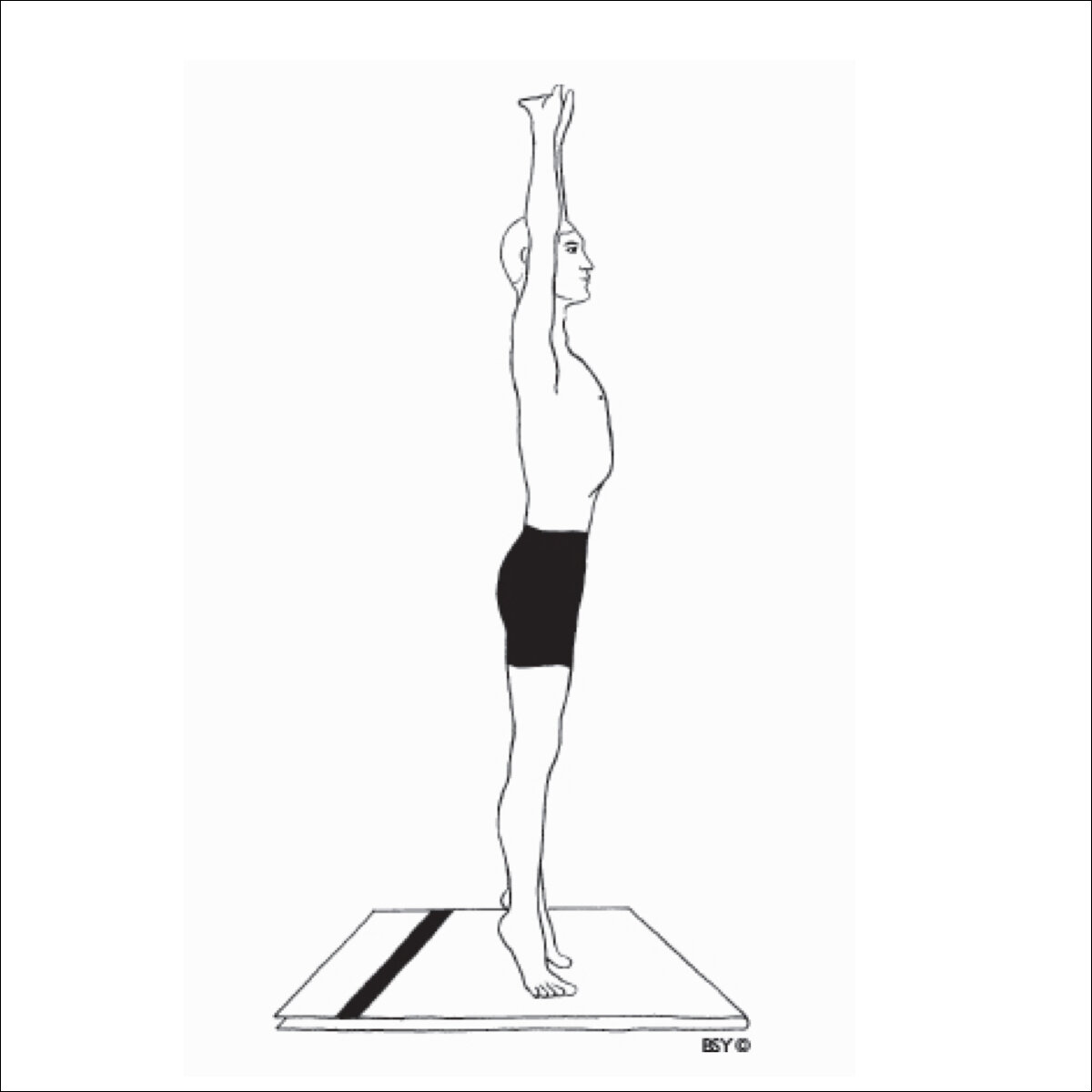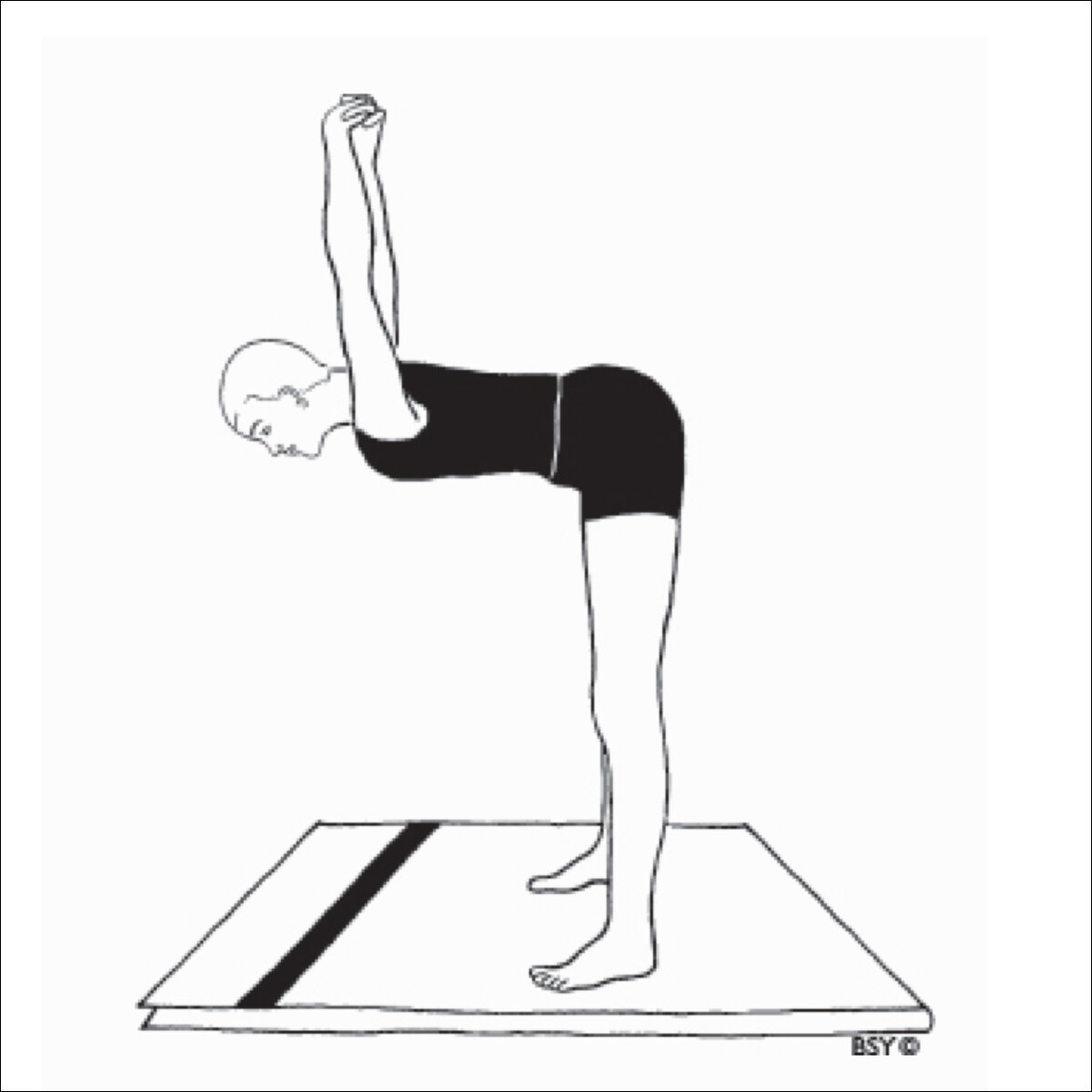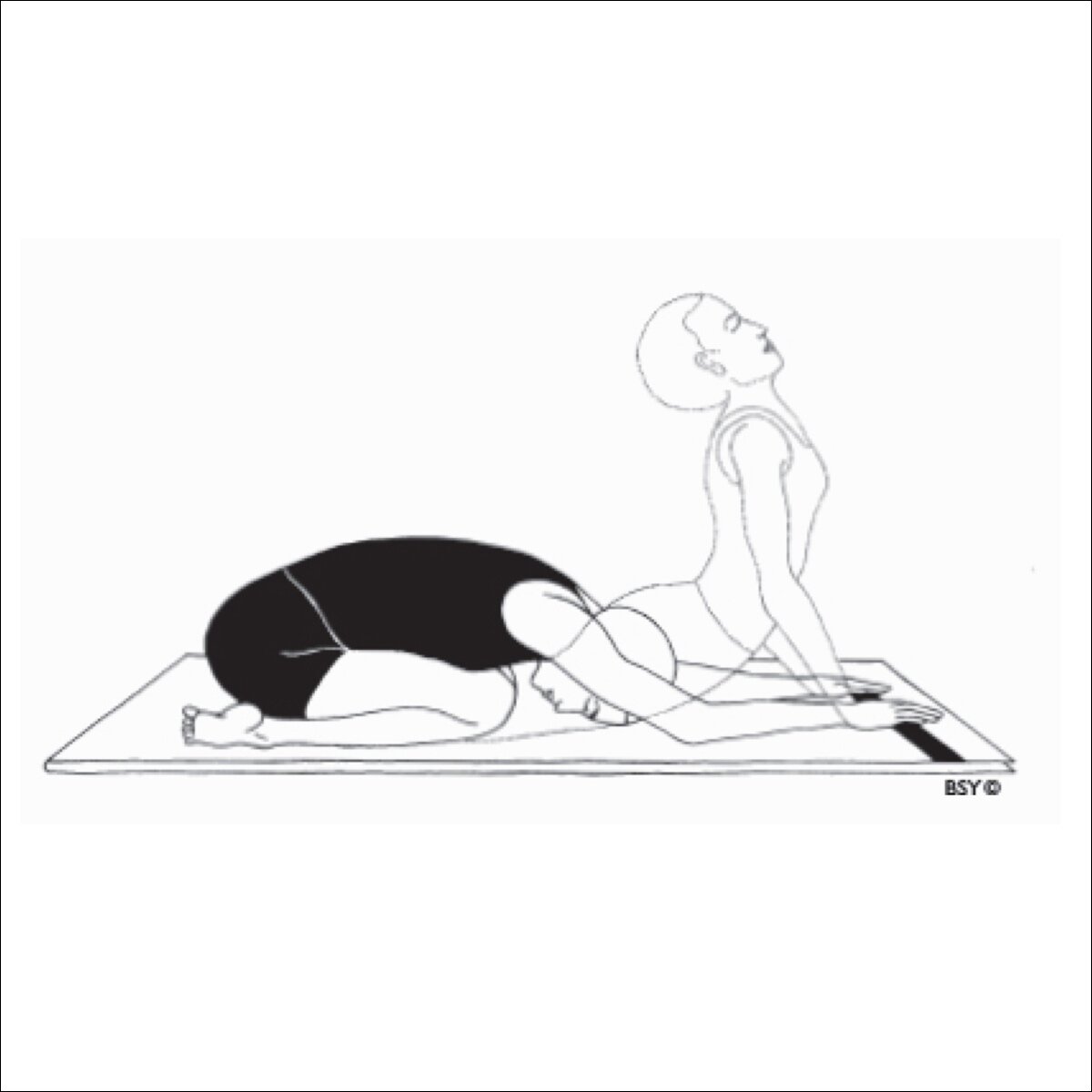Asana
The videos below are only for your reference. You need to listen to your own body, and adjust the speed and depth of the practice accordingly.
The practices are to be done in the order given below.
If you only do practices in bold, the sequence should take approximately 25 minutes. The whole sequence takes approximately 45 minutes.
All practices in sequence: click here to access playlist
Pada chakrasana (leg rotation)
Single-leg version: click here
Double-leg version: click here
Practise 5-10 rounds (each variation)
Breathe in as the leg goes up, and out on the downward movement.
If this practice is not suitable for you, practise pada sanchalana (cycling) above instead.
Click the links below for videos:
Single-leg version: click here
Double-leg version (alternating): click here
Double-leg version (together): click here
Goolpha Chakra (ankle rotations)
Try to keep knees steady.
When movement has been developed, coordinate with breath: inhale when feet go up, exhale where away from the body.
Practise 10 rounds in each direction
Janu Chakra (knee rotation)
Single leg variation: click here
Double leg variation: click here
Inhale when the leg goes upwards, exhale as the lower leg completes the rotation downwards.
Try to only hug the thigh so close as to enable the leg to straighten when going up.
Practise 7-10 rounds (each leg / each variation)
Shroni Chakra (hip rotations)
Practise 7-10 rounds slowly, with deep breaths, in both directions.
Try to keep your lower back upright, and the leg that is moving completely relaxed.
Breathe in when knee is raised up, exhale when lowering it down.
NOTE: If this practice is too challenging for you at the moment, practise the half butterfly instead (click here for video).
Nauka Sanchalana (rowing the boat)
Practise 7-10 rounds.
Breathe in as your body leans back and arms go upwards, breathe out as you bend forward.
IMPORTANT: Always lead the movement with the abdomen and chest, bending from the hips, not the waist. There will be a slight bend in the lower back but you should strive to feel the stretch only in the hamstrings. This may greatly reduce the range of your arm movement, but protect you from lower back injuries. Go at your own pace, and don’t try to reach your feet through force!
If this practice strains your lower back despite precautions, substitute with the standing practice of dwikonasana (click here for video), or vayu nishkasana (click here for video)
Chakki chalanasana (churning the mill)
Practise 7-10 rounds in both directions.
Breathe in as your body moves back, breathe out with the forward movement.
IMPORTANT: Precautions like in Nauka Sanchalana above.
Namaskarasana (salutation pose)
Practise 7-10 rounds. Breathe in, lift the head, and breathe in when in the starting position. Breathe out as you bring your head between your arms, lean forward, and bring the knees together.
IMPORTANT: Make sure your position is stable: either place your feet flat on the floor or, if need be, roll a blanket under your heels.
Kashtha Takshanasana (chopping wood)
Practise 7-10 rounds. Breathe in deeply through the nose as you lift the head, and hold the breath for 1-2 seconds as the tension in back and shoulders intensifies. Breathe out forcefully trough the mouth as you swing both arms downwards. For an added stress-release effect, produce a loud “HA” sound at the end of the exhalation.
IMPORTANT: Precautions as for Namaskarasana above. Additionally, take care not to hit the floor on the downward movement of the arms so you don’t hurt your hands.
If this practice is not suitable for you due to the squat, you can do it standing up as shown in the second part of the video.
Vayu Nishkasana (wind-releasing pose)
Practise 7-10 rounds. Breathe in deeply through the nose as you lift the head, and hold the breath for 1-2 seconds. Then exhale as you lift the buttocks and straighten your legs, with the aim not to move the shoulders from their pivoting position. However, move the shoulders up and down as needed until flexibility in the hamstrings develops with practice.
Tadasana (palm tree pose)
Practise 10 rounds.
Breathe deeply in on the way up, breathe out on the way down.
Do each movement slowly and with control, developing balance gradually.
Fix your gaze on a point ahead of you to help you maintain balance.
Coordinate the movement of the heels and hands; synchronise both with the movement of the breath.
Tiryaka Tadasana (swaying palm tree pose)
Practise 10 rounds to each side.
Breathe in when coming into the starting position. Exhale when bending to each side.
First practise with the eyes open to make sure you’re not twisting.
Then, close your eyes and feel the movement from within.
Squeeze the abdominal muscles when bending to the side, to protect the lower back and to allow deeper sideways movement.
Kati Chakrasana (waist rotating pose)
Practise 10 rounds to each side.
Breathe in when coming into the starting position. Exhale when twisting to each side.
First practise with the eyes open to make sure your waist and hips stay facing forward.
Then, close your eyes and feel the movement from within.
Lead the movement with your chin and keep the head upright.
Turn the head fully, to give the whole spine an even movement, from the base to the top.
Dvikonasana (two-angle pose)
Practise up to 5 rounds.
Breathe in in the starting position. Exhale as you bend forward.
Inhale when raising the arms up. Hold the breath in for up to 5 seconds.
Exhale when lowering the arms. Inhale when coming back up into the starting position
Always bend from the hips. Feel the movement mainly in the hamstrings.
Only bend forward until you feel forearms lifting off the back, then stop.
Do not push your arms into a movement that is not appropriate for you. Flexibility in the shoulders will come with practice.
Utthanasana (squat-and-rise pose)
Practise up to 10 rounds. Only do the first part - the discovery of your range of movement - once.
Then practise the remaining rounds with the deepest comfortably achievable version.
Keep the back as straight as you can.
IMPORTANT: Make sure your knees go in the direction of the feet. Do not try to come closer to the floor by bringing the knees too far over the toes - the effort should be all in the thighs, buttocks, and abdominals.
The necessary strength in these muscles, as well as flexibility in the hips, will develop with practice.
Shashank-bhujangasana (striking cobra)
Practise 7-10 rounds.
Breathe in when coming into cobra pose. Breathe out when going back into child’s pose.Always make sure to bring the whole front of the body and the hips onto the floor before lifting into cobra, even if that means you need to slide your hands forward and back from the starting position.
If this practice is too challenging, substitute with Vyaghrasana (click here for video).
Shavasana (corpse pose)
Practise for at least 5 minutes after your asana programme.
